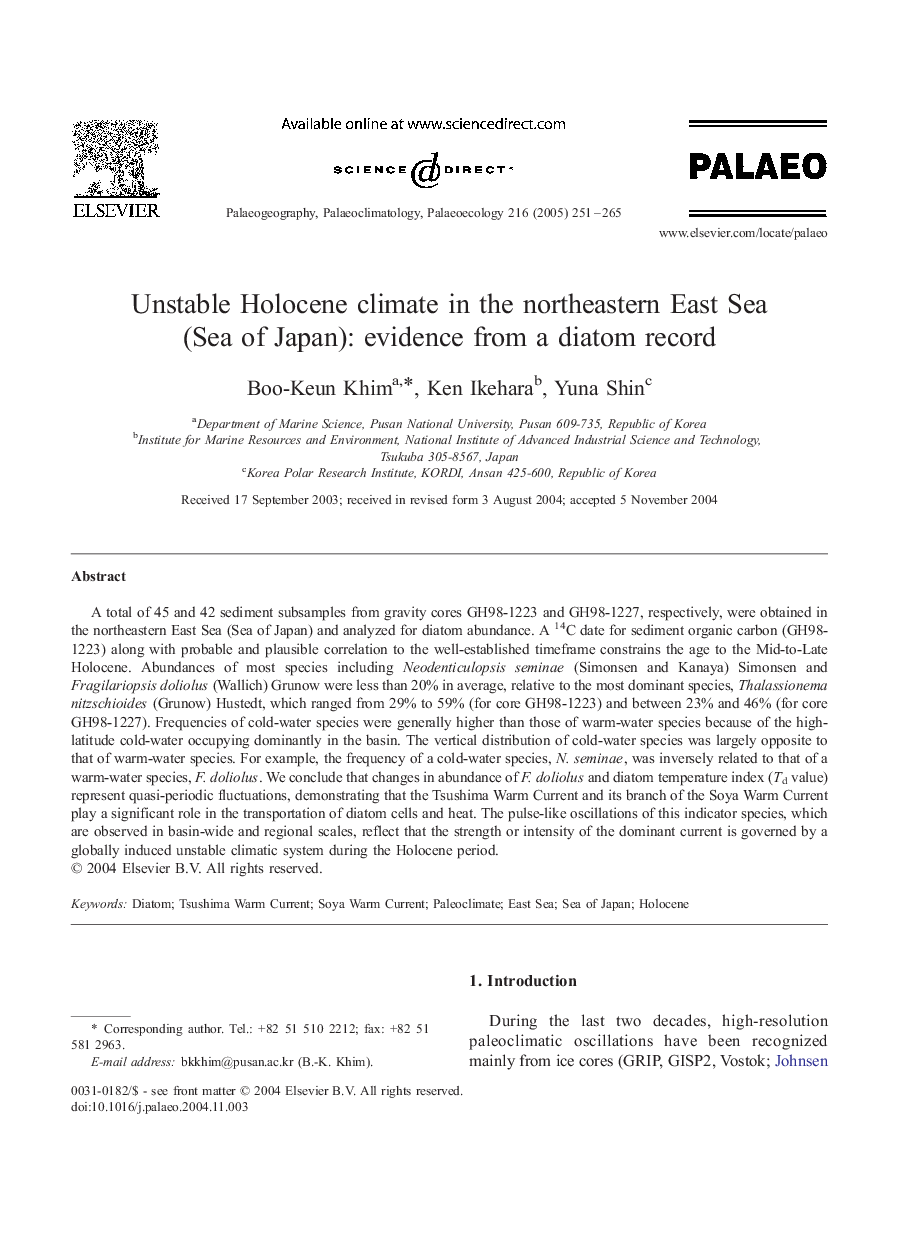| Article ID | Journal | Published Year | Pages | File Type |
|---|---|---|---|---|
| 9463265 | Palaeogeography, Palaeoclimatology, Palaeoecology | 2005 | 15 Pages |
Abstract
A total of 45 and 42 sediment subsamples from gravity cores GH98-1223 and GH98-1227, respectively, were obtained in the northeastern East Sea (Sea of Japan) and analyzed for diatom abundance. A 14C date for sediment organic carbon (GH98-1223) along with probable and plausible correlation to the well-established timeframe constrains the age to the Mid-to-Late Holocene. Abundances of most species including Neodenticulopsis seminae (Simonsen and Kanaya) Simonsen and Fragilariopsis doliolus (Wallich) Grunow were less than 20% in average, relative to the most dominant species, Thalassionema nitzschioides (Grunow) Hustedt, which ranged from 29% to 59% (for core GH98-1223) and between 23% and 46% (for core GH98-1227). Frequencies of cold-water species were generally higher than those of warm-water species because of the high-latitude cold-water occupying dominantly in the basin. The vertical distribution of cold-water species was largely opposite to that of warm-water species. For example, the frequency of a cold-water species, N. seminae, was inversely related to that of a warm-water species, F. doliolus. We conclude that changes in abundance of F. doliolus and diatom temperature index (Td value) represent quasi-periodic fluctuations, demonstrating that the Tsushima Warm Current and its branch of the Soya Warm Current play a significant role in the transportation of diatom cells and heat. The pulse-like oscillations of this indicator species, which are observed in basin-wide and regional scales, reflect that the strength or intensity of the dominant current is governed by a globally induced unstable climatic system during the Holocene period.
Related Topics
Physical Sciences and Engineering
Earth and Planetary Sciences
Earth-Surface Processes
Authors
Boo-Keun Khim, Ken Ikehara, Yuna Shin,
